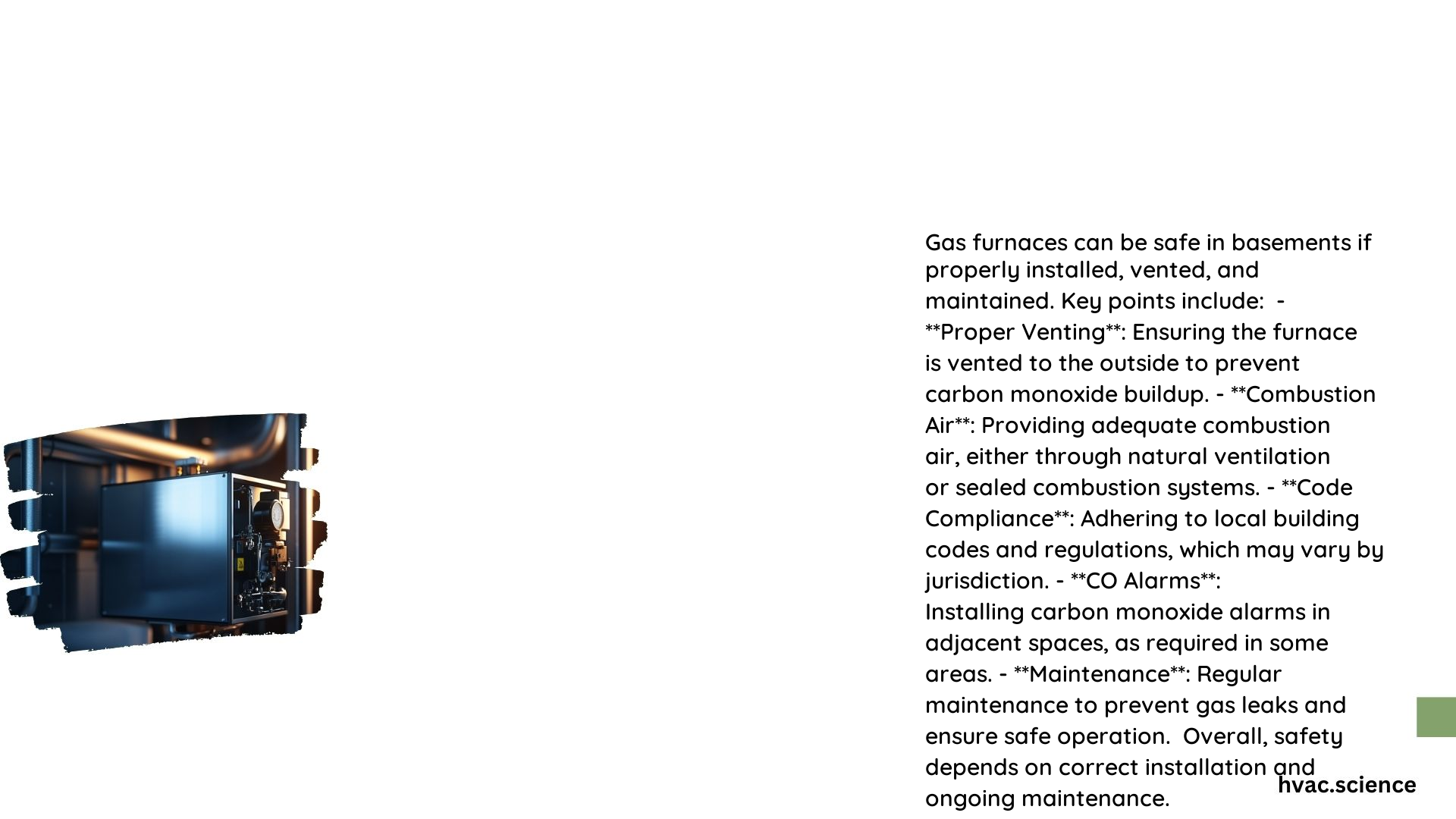1. Safety of Gas Furnaces in Finished Daylight Basements with Bedrooms
Codes and Regulations:
Gas furnaces can be safely installed in finished daylight basements with bedrooms, but they must adhere to specific codes and regulations. According to the Fuel Gas Code, gas appliances are generally not allowed in sleeping rooms, bathrooms, or toilet rooms, but there are exceptions for direct-vent installations.
Direct-Vent Installations: A direct-vent furnace, which draws combustion air directly from the outside and discharges exhaust gases to the outdoors, is permissible. This type of installation is common for high-efficiency furnaces with a two-pipe system.
Separate Room: If the furnace is not a direct-vent type, it can be installed in a separate room that opens only into the bedroom, provided the room has a solid weather-stripped, self-closing door and combustion air is taken directly from the outdoors.
2. Specific Requirements for Gas Furnaces in Finished Daylight Basements

Combustion Air: Ensuring adequate combustion air is crucial. This can be achieved by installing the furnace in a way that allows it to draw air from outside, especially in tightly sealed homes.
Ventilation: Proper ventilation is essential to prevent the buildup of carbon monoxide (CO). This includes ensuring that the furnace is vented correctly and that there are no obstructions to the venting system.
CO Alarms: In many jurisdictions, it is required to have CO alarms in hallways or spaces adjacent to bedrooms when there are gas appliances present.
3. Safety Concerns Associated with Gas Furnaces in Occupied Basements
Potential Hazards:
– Carbon Monoxide Risks: One of the primary safety concerns is the risk of carbon monoxide poisoning. This can occur if the furnace is not properly vented or if there are issues with combustion air.
– Symptoms: CO poisoning can be silent and deadly. Symptoms include headache, dizziness, nausea, and in severe cases, loss of consciousness and death.
– Ventilation Issues: Inadequate ventilation can lead to the accumulation of CO and other combustion byproducts. Ensuring that the basement is well-ventilated and that the furnace has a proper make-up air system is critical.
– Fire Safety Measures: Fire safety is also a concern. Ensuring that the furnace and surrounding area are clear of flammable materials and that there are no ignition sources nearby is important.
4. Ensuring Gas Furnace Safety and Maintenance
Detailed Maintenance Schedule:
1. Annual Inspections:
– Tools Required: A screwdriver, wrench, vacuum cleaner, and a CO detector.
– Steps:
– Filter Cleaning/Replacement: Clean or replace the furnace filter to ensure proper airflow and efficiency.
– Venting System Check: Inspect the venting system for any blockages or damage. Ensure that the vent pipes are securely connected and that there are no signs of rust or corrosion.
– Combustion Air Check: Verify that the combustion air intake is clear and functioning properly. Ensure that there are no obstructions to the intake.
– Burner Inspection: Inspect the burner for any signs of wear or damage. Clean the burner area to ensure proper combustion.
– CO Detector Check: Ensure that CO detectors are installed and functioning correctly in areas adjacent to the furnace.
- Monthly Checks:
- Filter Inspection: Check the furnace filter monthly and clean or replace it as needed.
-
Venting System Inspection: Visually inspect the venting system for any signs of damage or blockage.
-
Seasonal Checks:
- Pre-Heating Season: Before the heating season, perform a thorough inspection of the furnace, including the venting system, combustion air intake, and burner area.
- Post-Heating Season: After the heating season, inspect the furnace again to ensure it is in good condition before it is not used for an extended period.
Recommended Products:
– CO Detectors: Install CO detectors in hallways or spaces adjacent to bedrooms. Ensure they are certified by a reputable testing organization such as UL (Underwriters Laboratories).
– Make-Up Air Systems: Consider installing automatic mechanical make-up air dampers to ensure proper ventilation and prevent negative air pressure issues.
Measurements and Specifications:
– Combustion Air Volume: Ensure the room where the furnace is installed meets the required volume criteria. For example, 50 cubic feet of room volume for every 1,000 BTUs of appliance input.
– Venting System Specifications: Follow the manufacturer’s instructions and local building codes for venting system specifications. Ensure the vent pipes are of the correct size and material, and that they are properly sloped and supported.
